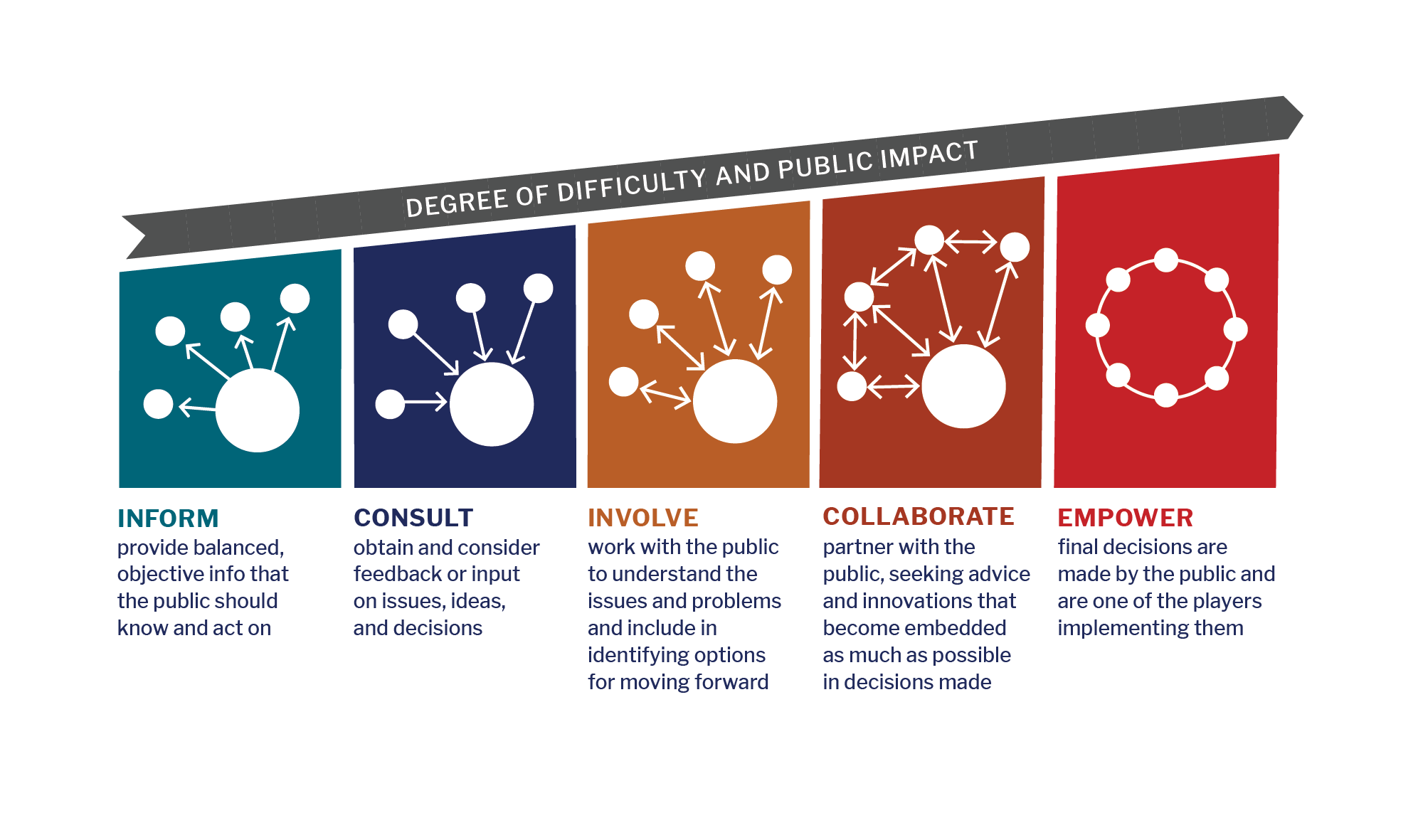For more information:
Email UsCommunity Engagement
The “Principles of Community Engagement,” defines community engaged research as, “An approach to science that involves working together with groups of people who are connected by geographic proximity, identity, special interest, or other factors to address issues affecting the wellbeing of those people. It is a powerful vehicle that can improve the health of the community and its members. It often involves partnerships and coalitions that help mobilize resources and influence systems, change relationships among partners, and serve as catalysts for changing policies, programs, and practices.”
Community Partnerships
Partnerships may include nonprofit organizations, community clinics, hospitals, faith-based organizations, schools, and community residents. For guidance on developing community partnerships, see: Toolkit for Developing Community Partnerships.
Community Advisory Boards (CAB)
CABs support a research study in a variety of ways, including informing research question development, study design, instrument development, recruitment, intervention development/identification, and data interpretation and dissemination. Representatives may be members of your target population or come from community organizations that serve them. For guidance on developing your CAB, see: Community Advisory Board Toolkit.
Community Engagement Continuum
View image description.
Figure adapted from Principles of Community Engagement.
Principles of Community Engagement
Defined purposes, goals, and populations. Researchers and organizers need to clearly state and align the purpose of community activity.
- Action: Meet with community leaders, determine if research goal meets an urgent need of the community.
Know the community. It is important to learn about the community, its culture, social networks, economic conditions, demographics, history, and experiences.
- Action: List the community’s assets and strengths that can help with communications and decision-making. Engage collaborators who have existing partnerships.
Go to the community. Engagement requires establishing relationships and building trust.
- Action: Meet with key leaders and groups in their surroundings to ascertain their concerns, issues, and barriers to participation.
Look for collective self-determination. If community members can identify with an issue, feel it is important, have influence, and make a contribution, then they are more likely to actively participate.
- Action: Help community identify their own issues, name the problems, develop action areas, implement strategies and evaluate outcomes.
Community partnerships are critical. Effective engagement includes equitable community partnerships and transparent discussions on power and decision-making.
- Action: Work with partners to identify co-learning opportunities and rules/norms for the partnership.
Respect community and culture. Culture can be related to economics, education, employment, language, race, ethnicity, age, gender, sexuality, faith, literacy, health, or personal interests.
- Action: Co-design processes to engage individuals so that participation barriers are minimized and cultures and norms celebrated.
Mobilize community assets and develop capacity. Community assets will vary depending on the individuals and organizations present.
- Action: With partners, identify community interests, skills, and experiences, and existing social networks that can be built into the engagement process.
Maintain flexibility. The community engagement process can lead to new relationships, alliances, and social networks. Engaged communities may also lead to changes in programs, public policies, and resource allocations.
- Action: Co-develop a process to incorporate input and feedback from the community.
Commitment to collaboration. Community engagement may be centered on a specific initiative. However, long-term partnerships have the greatest potential for successful outcomes that affect complex societal issues.
- Action: Co-develop infrastructure that will sustain research and collaboration beyond a single grant.
The principles above were adapted from 9 Principles of Community Engagement and Suggested Actions (PDF), which provides a more detailed collection of suggested actions.
Other Resources and FAQs
Community Partnered Research “How To” Series: provides ideas on developing tools and documents collaboratively, such as a Memorandum of Understanding (MOU), which can help to ensure clarity of roles and responsibilities, and partnered consent forms.
Toolkit for Developing Community Partnerships: Clinics and other community organizations are often overwhelmed with demands that exceed their capacity. This resource provides strategies researchers can use to reduce the challenges of research, such as providing partners with monetary compensation, staff training, technical assistance, new software, and staffing support for community needs.
Community-Engaged Research: A Quick Start Guide for Researchers – an in-depth introduction with examples of research projects and planning considerations.
Resources referenced were developed by partner Community Engagement programs in the CTSA Consortium.

